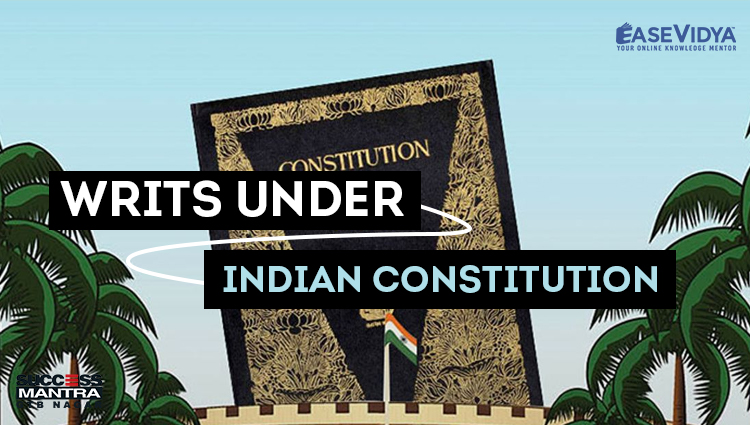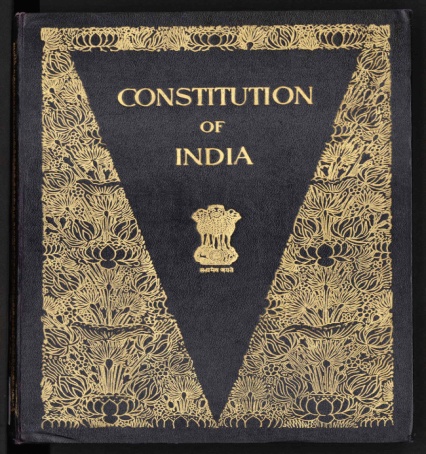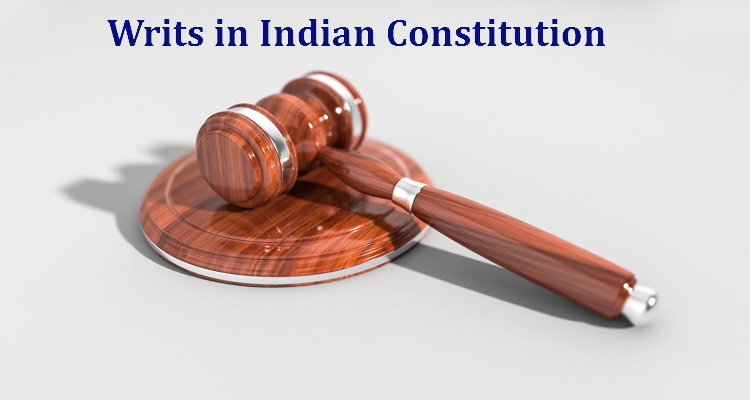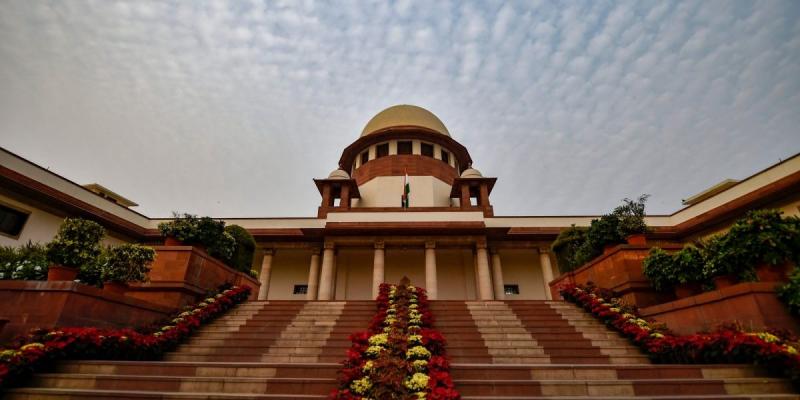
WRITS UNDER INDIAN CONSTITUTION
WRITS UNDER INDIAN CONSTITUTION

Fundamental Rights are contained in Part III of the Indian Constitution including the right to equality, right to life and liberty etc. Merely providing for Fundamental Rights is not sufficient. It is essential that these Fundamental Rights are protected and enforced as well. To protect Fundamental Rights the Indian Constitution, under Articles 32 and 226, provides the right to approach the Supreme Court or High Court, respectively, to any person whose fundamental Right has been violated. At the same time, the two articles give the right to the highest courts of the country to issue writs in order to enforce Fundamental Rights. Whereas Article 139 of the Constitution allows the Indian Parliament to make law for conferring on the Supreme Court, the power to issue writs for enforcement of rights other than fundamental rights. Fundamentally, a writ is a formal written order issued by anybody, executive or judicial, authorized to do so. In modern times, this body is generally judicial. Therefore, a writ can be understood as a formal written order issued by a Court having authority to issue such an order. Orders, warrants, directions, summons etc. are all essentially writs. A writ petition is an application filed before the competent Court requesting it to issue a specific writ.
DIFFERENT KINDS OF WRITS
Articles 32 and 226 specifically provide for five kinds of writs. These writs are issued in different circumstances and have different implications. They are:
HABEAS CORPUS

‘Habeas Corpus’ literally means “to have a body". This writ is used to release a person who has been unlawfully detained or imprisoned. By virtue of this writ, the Court directs the person so detained to be brought before it to examine the legality of his detention. If the Court concludes that the detention was unlawful, then it directs the person to be released immediately.
UNLAWFUL DETENTION:
The detention that was not done in accordance with the procedure laid down. For instance, the person was not produced before a Magistrate within 24 hours. The person was arrested when he did not violate any law. An arrest was made under a law that is unconstitutional. This writ can be filed by the detained person himself or his relatives or friends on his behalf. It can be issued against both public authorities and individuals.
MANDAMUS
‘Mandamus’ means ‘we command’. It is issued by the Court to direct a public authority to perform the legal duties which it has not or refused to perform. It can be issued by the Court against a public official, public corporation, tribunal, inferior court or the government. It cannot be issued against a private individual or body, the President or Governors of States or against a working Chief Justices.
Further, it cannot be issued in the following circumstances:
The duty in question is discretionary and not mandatory.
For the performance of a non-statutory function.
Performance of the duty involves rights of purely private nature.
QUO WARRANTO
‘Quo Warranto’ means ‘by what warrant’. Through this writ, the Court calls upon a person holding a public office to show under what authority he holds that office. If it is found that the person is not entitled to hold that office, he may be ousted from it. Its objective is to prevent a person from holding an office he is not entitled to therefore preventing usurpation of any public office. It cannot be issued with respect to a private office.
CERTIORARI
‘Certiorari’ means to ‘certify’. Certiorari is a curative writ. When the Court is of the opinion that a lower court or a tribunal has passed an order which is beyond its powers or committed an error of law then, through the writ of certiorari, it may transfer the case to itself or quash the order passed by the lower court or tribunal.
PROHIBITION
A writ of prohibition is issued by a Court to prohibit the lower courts, tribunals and other quasi-judicial authorities from doing something beyond their authority. It is issued to direct inactivity and thus differs from mandamus which directs activity.
FILING OF A WRIT PETITION

A writ petition can be filed by any person whose Fundamental Rights have been infringed by the State. Under a Public Interest Litigation, any public-spirited person may file a writ petition in the interest of the general public even if his own Fundamental Right has not been infringed. Under Article 32, a writ petition can be filed in the Supreme Court. The Supreme Court can issue a writ only if the petitioner can prove that his Fundamental Right has been infringed. It is important to note that the right to approach the Supreme Court in case of a violation of a Fundamental Right is in itself a Fundamental Right since it is contained in Part III of the Constitution.
Under Article 226, a writ petition can be filed before any High Court within whose jurisdiction the cause of action arises, either wholly or in part. It is immaterial if the authority against whom the writ petition is filed is within the territory or not. The power of the High Court to issue a writ is much wider than that of the Supreme Court. The High Court may grant a writ for the enforcement of fundamental rights or for any other purpose such as violation of any statutory duties by a statutory authority. Thus, a writ petition filed before a Supreme Court can be filed against a private person too. Where a fundamental right has been infringed, either the Supreme Court or the High Court can be resorted to. It is not necessary to go to the High Court first and only thereafter approach the Supreme Court. However, if a writ petition is filed directly in the Supreme Court, the petitioner has to establish why the High Court was not approached first.
QUESTIONS 1
Q.1 The power to issue writs by the Supreme Court has been envisaged under which of the following articles?
A. Article 226
B. Article 32: ANSWER
C. Article 31
D. Article 25
Q.2 How many kinds of writs have been recognized under the Indian Constitution?
A. 4 Writs
B. 5 Writs: ANSWER
C. 6 Writs
D. 7 Writs
Q.3 Which of the following Articles of the Constitution allows issuance of writs for enforcing rights other than fundamental rights?
A. Article 32
B. Article 226
C. Article 139: ANSWER
D. None of the above
Q.4 Which of the following writs under the Indian Constitution is considered as the bulwark of personal freedom?
A. Mandamus
B. Habeas Corpus: ANSWER
C. Certiorari
D. Quo Warranto
Q.5 Writ of mandamus relates to:
A. Performance of a legal duty by any public authority: ANSWER
B. Quashing of an order passed without jurisdiction
C. Inquiring into the authority by which a public office is being held
D. Preventing an inferior court from acting without jurisdiction
Q.6 X is an aggrieved party by an order passed by District court, New Delhi without having jurisdiction. Which of the following writs is the proper remedy available to X?
A. Mandamus
B. Prohibition
C. Quo warranto
D. Certiorari: ANSWER
Q.7 Which of the following writs can be used against a person believed to be holding a public office to which he is not entitled to?
A. Habeas corpus
B. Quo-Warranto: ANSWER
C. Prohibition
D. Mandamus
Q.8 Which writ is issued when a lower court or body tries to transgress the limits or powers vested in it.?
A. Habeas corpus
B. Prohibition: ANSWER
C. Quo warranto
D. Certiorari
Q.9 Which of the following writs can be issued against administrative authorities?
A. Habeas Corpus & Mandamus
B. Certiorari & Prohibition
C. Quo warranto & Mandamus
D. Mandamus & Certiorari: ANSWER
Q.10 Which fundamental right of the Indian Constitution is considered as “Heart and soul of the Constitution” by Dr. Ambedkar?
A. Right to Equality:- Article 14-18
B. Right to Constitutional Remedies:- Article 32: ANSWER
C. Right against Exploitation:- Article 23-24
D. Right to Freedom:- Article 19-22













0 Comment